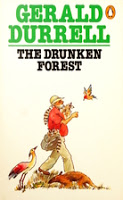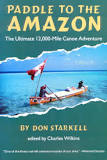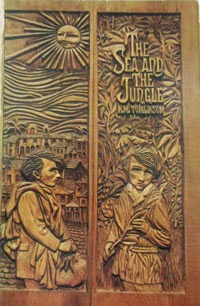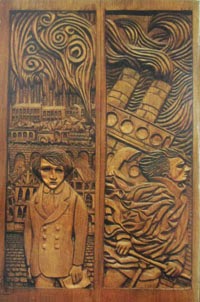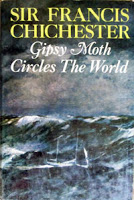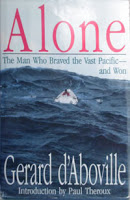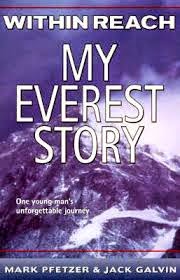by Gerald Durrell
Note: there\’s a spoiler in my third paragraph.
I\’m pitching into my newer acquisitions of Gerald Durrell, and this one does not disappoint. It\’s from early in his career as a wild animal collector. This book describes a trip in 1954, to Argentina and Paraguay. It was not, in the eyes of Durrell and his wife, a great success in terms of bringing animals home- but the description of their travels, the local people they met and of course the native wildlife are still fascinating reading. Durrell is a great storyteller, and he made me laugh out loud a good number of times in this book. I have to say, Durrell is one of the few writers I would put on par with James Herriot, when it comes to describing animals and their care.
Quite a few of the species mentioned in here were unfamiliar to me- the viscacha- a rodent with a striped face, which they were unable to catch. The douracouli, a nocturnal monkey which looks a lot like a lemur with its owlish face. A crab-eating raccoon, which could work open any kind of latch or lock the Durrells secured its cage with- that cracked me up. A beautifully marked tiger bittern- their description of doctoring its broken wing was very lively. Other things of note: I didn\’t know that armadillos eat carrion. Durrell got hold of a young bird that it turns out would only eat freshly masticated spinach leaves- and he convinced his wife to do the chewing. They told about catching a large number of brown guira cuckoos, which they thought were rather dumb birds. Years later they visited a zoo where a number of these cuckoos now lived, and were surprised that the birds obviously recognized them. It made them think again their initial assessment of any animals\’ intelligence, especially under duress in captive situations. The author also debunks some common misconceptions about wild animals. For example, he tells how he caught a large anaconda- a funny account, especially as he compared his experience to the lurid tales spouted in popular literature of the time (jungle thrillers).
He also refutes the frequent criticism he received at shutting up wild animals in cages. True, many of the animals initially try to escape. But there was a very touching chapter in this book, where at the end of gathering their collection and meticulously caring for them, they were forced to suddenly leave the country due to civil war. Normally the animals would have been transported home by ship- but since they had to go in a small plane, could now only take a few of the rare species, and those too young to survive if released. All the others were let go. The reptiles and some of the birds took off immediately. But most of the birds and small mammals hung around the camp for days, expecting to be fed again. Some even tried to get back into the cages. It was obvious they appreciated the free meals (and maybe the comfort and attention) they had become used to receiving. The Durrells had to harden their hearts against the animals\’ begging, and chase some of them off to force them to go back into the wild. They worried that the animals were now accustomed enough to people they would be friendly to strangers and get themselves killed (lots of the natives seemed to have misconceptions about the wildlife. Their housekeeper in particular was terrified by any animal).
I find it kind of amusing that the cover of the book depicts Durrell as an older man with a paunch and a white beard, whereas the lively pen illustrations inside (by Ralph Tompson) clearly show him as a young man. I guess the paperback was published later in his career and they wanted someone people could identify with his TV persona on the front. All the mass market paperbacks I have of his seem to play up the humor of his writing, in the cover illustrations.
Rating: 4/5 203 pages, 1956
